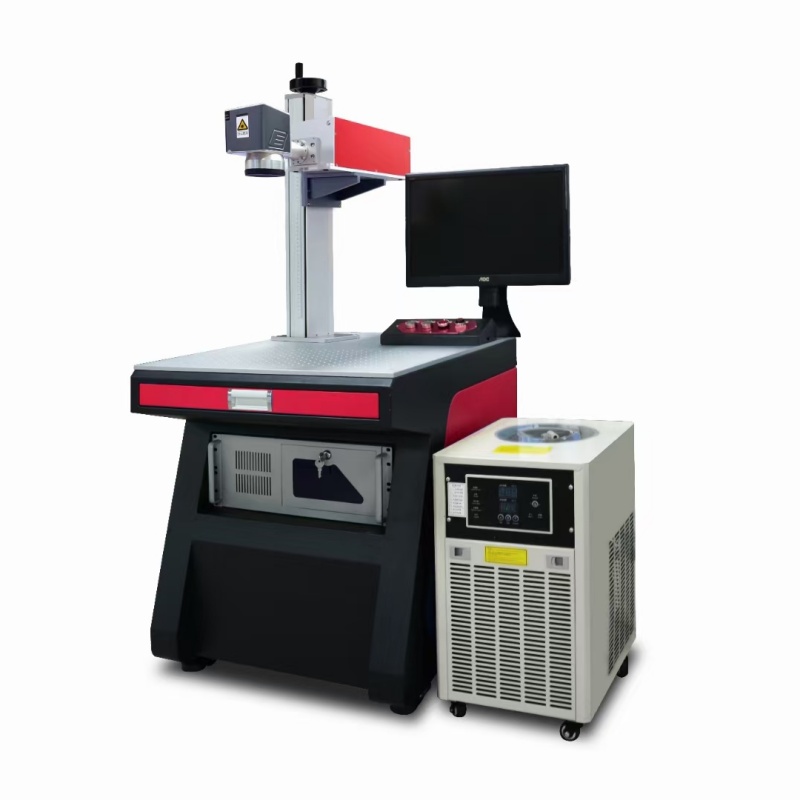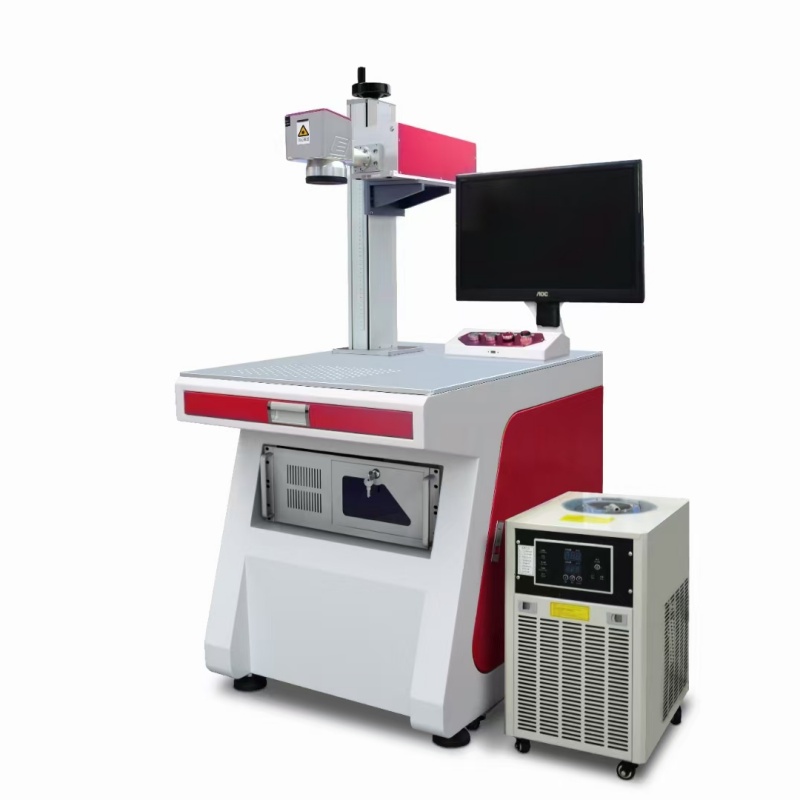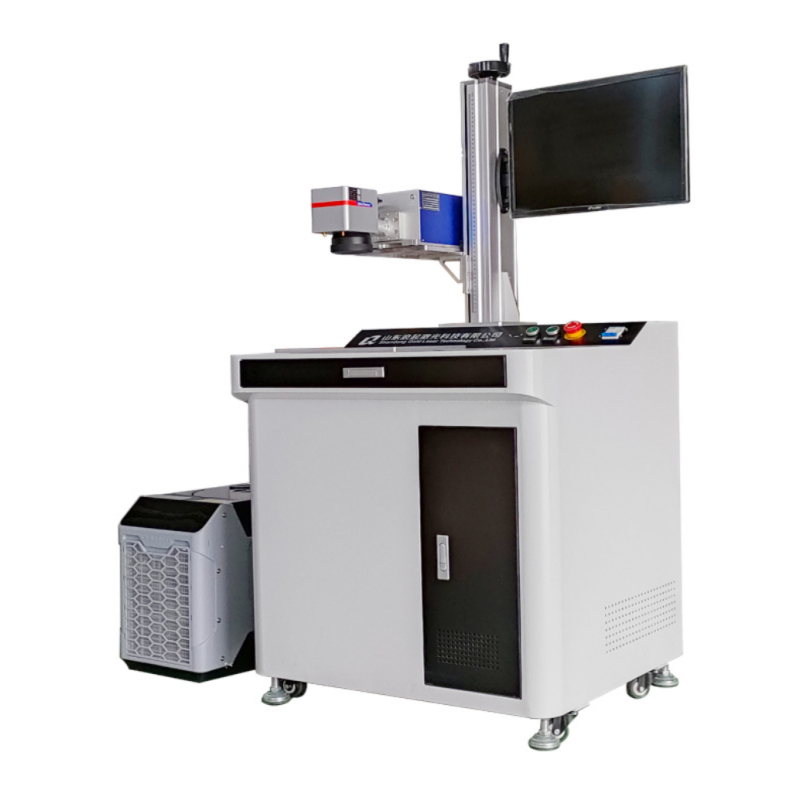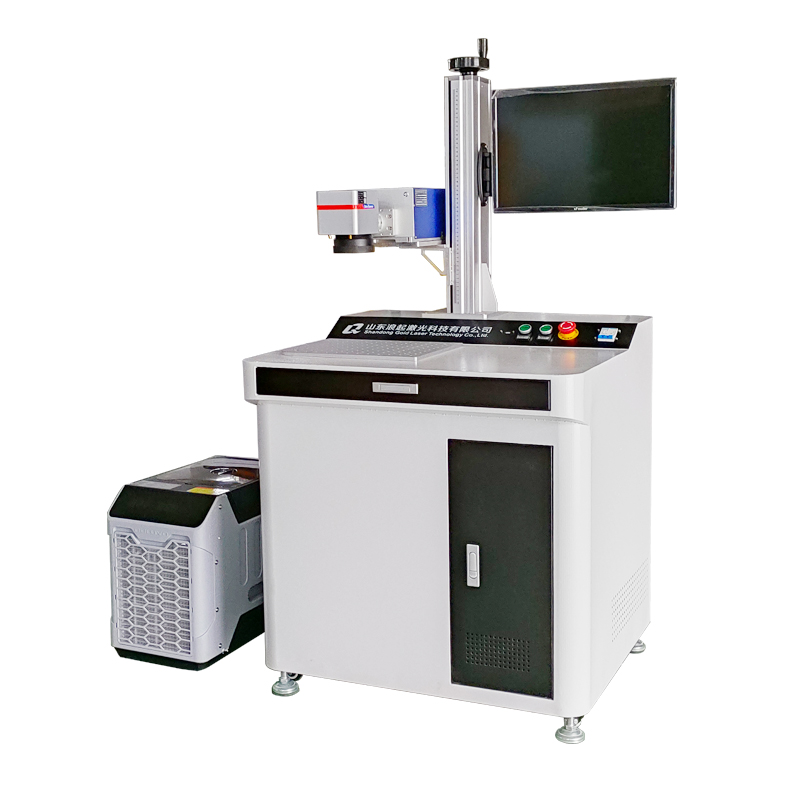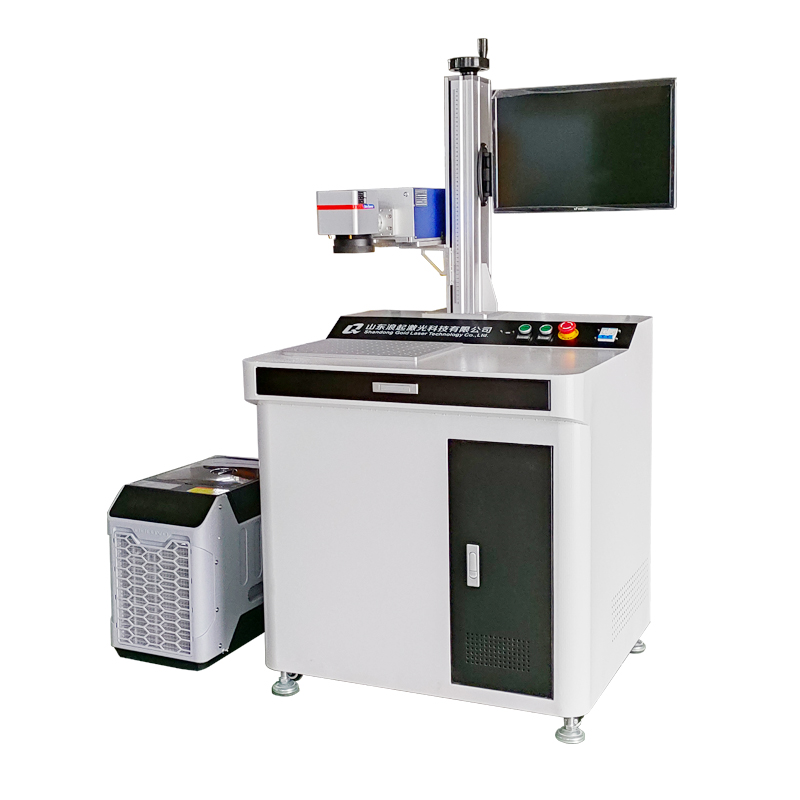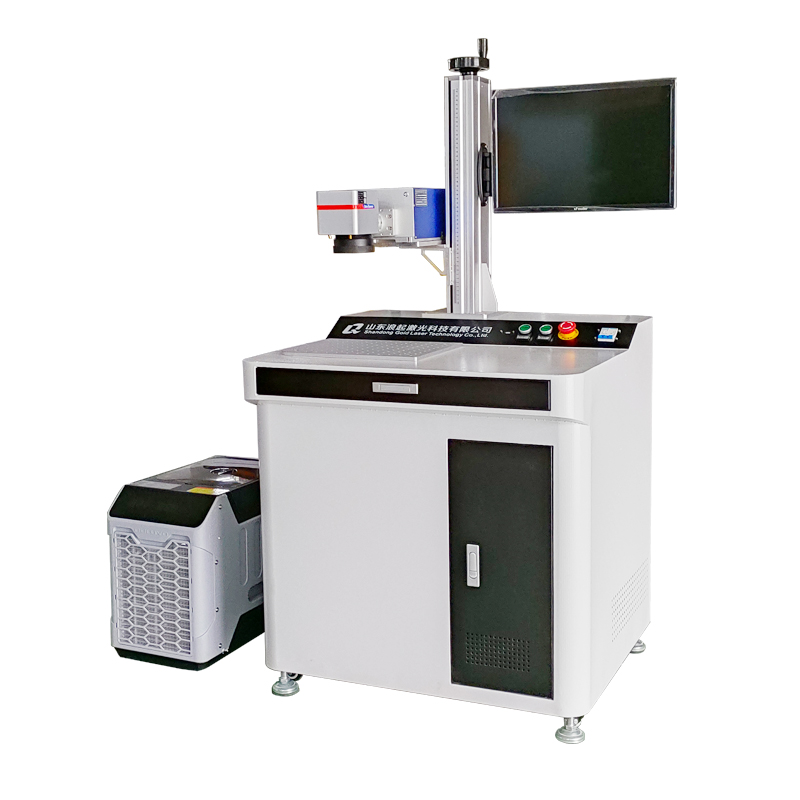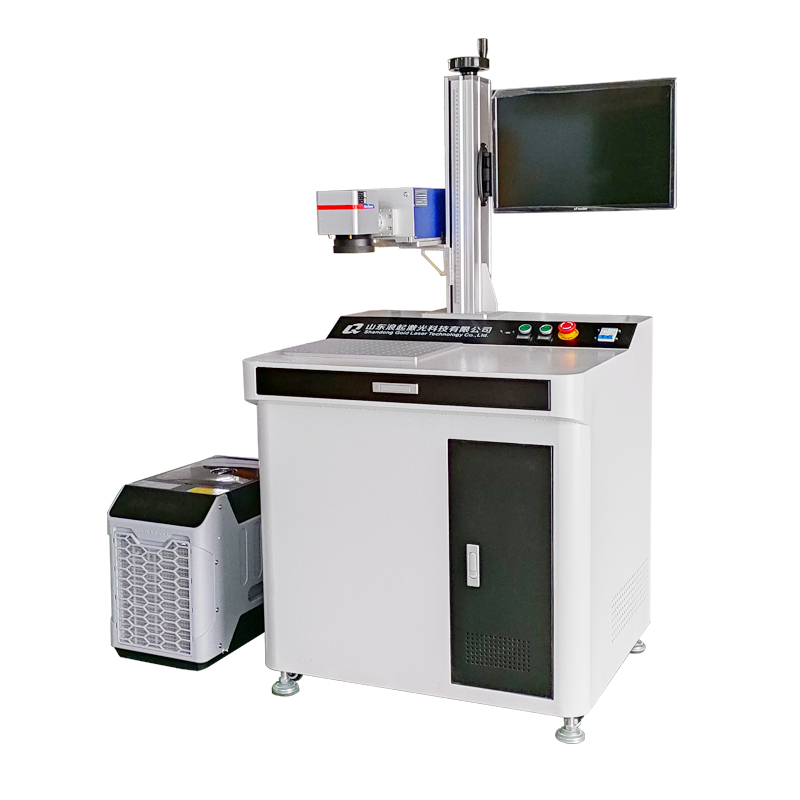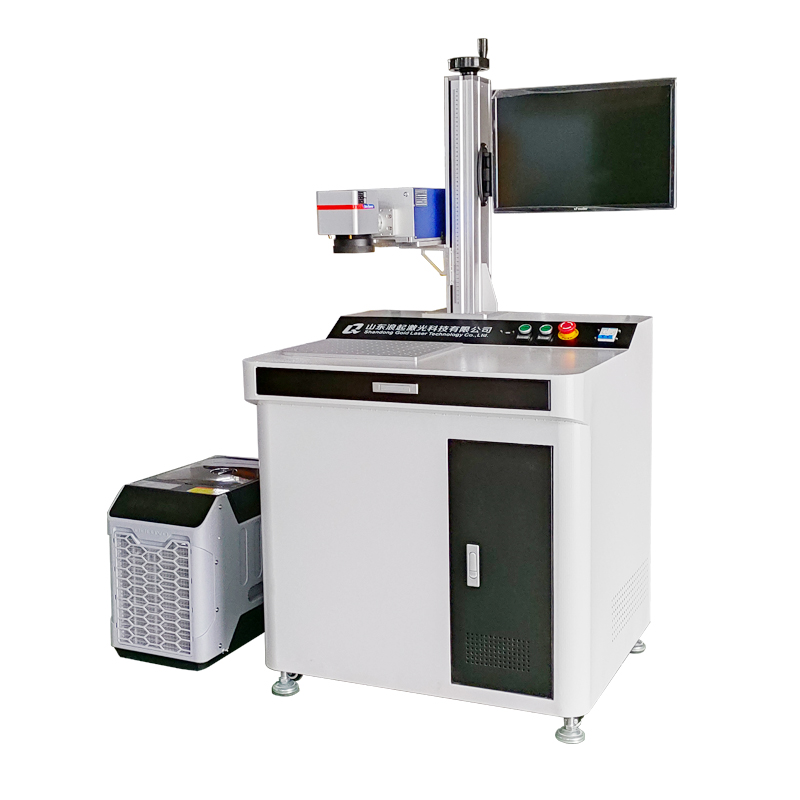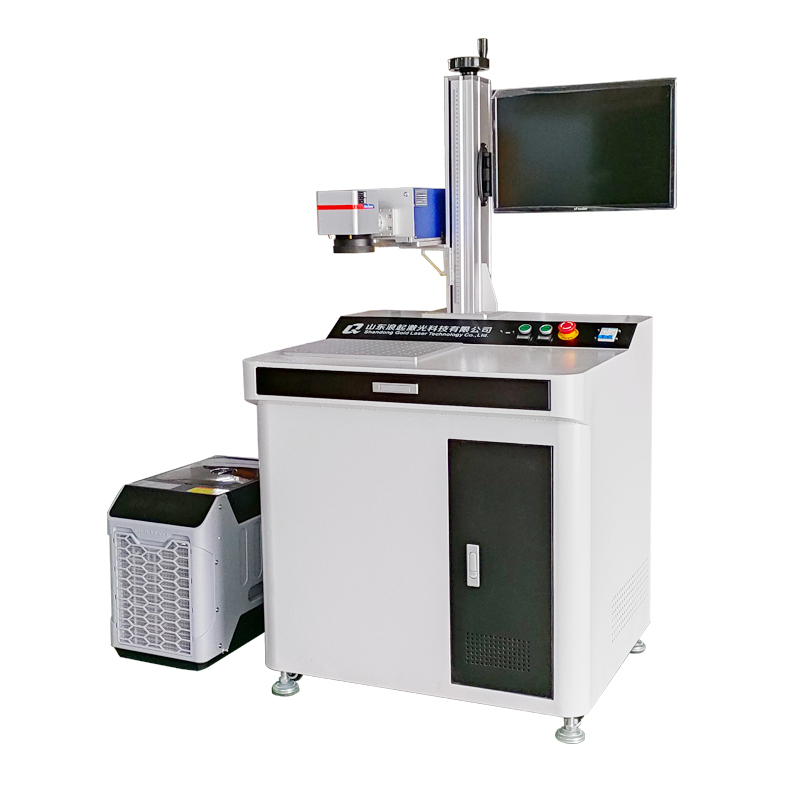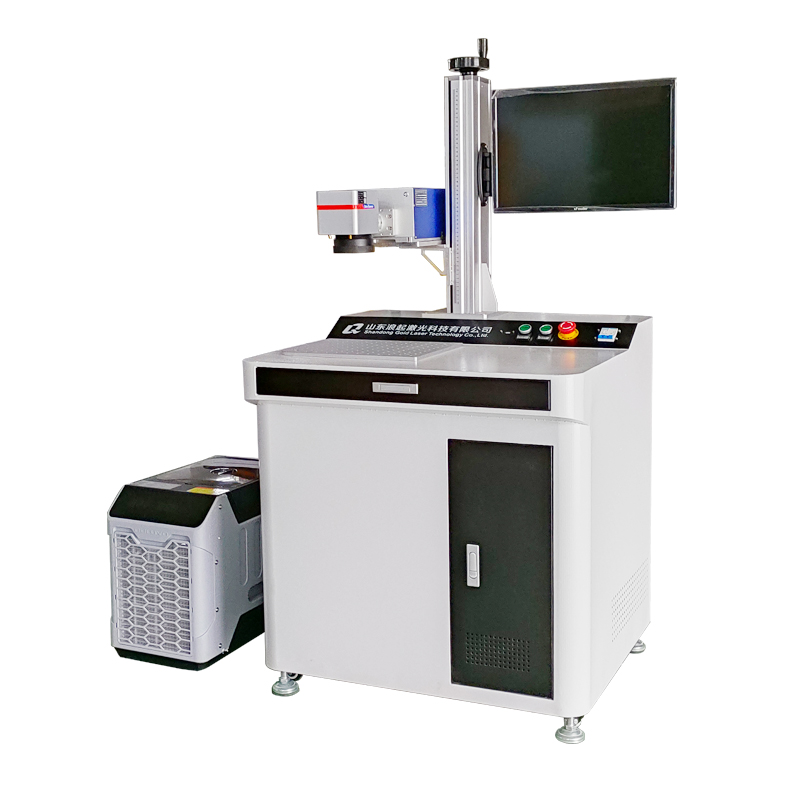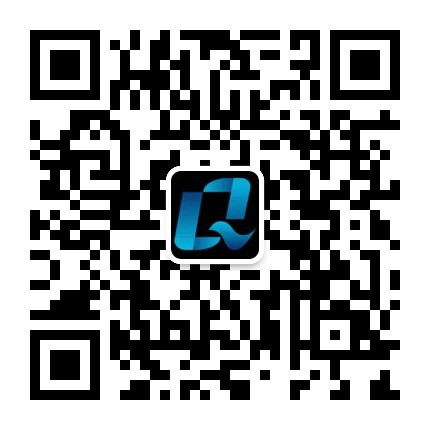UV desktop laser marking machines are compact, precision-oriented devices designed for high-quality marking on various materials. Here are their unique features:
1. Cold Laser Technology
Uses UV (ultraviolet) wavelength (355 nm), which minimizes heat impact, making it ideal for heat-sensitive materials like plastics, glass, and thin films.
Prevents burning, melting, or deformation of delicate surfaces.
2. High-Precision Marking
Achieves micron-level accuracy (up to 0.01mm), perfect for fine details, micro-text, QR codes, and intricate graphics.
Ideal for electronics (PCB marking), medical devices, and jewelry.
3. Wide Material Compatibility
Works on materials that fiber/CO₂ lasers can’t—plastics (ABS, PVC), glass, ceramics, silicone, anodized aluminum, and even some metals.
Excellent for high-contrast marks without surface damage.
4. No Consumables, Low Maintenance
Solid-state laser source (diode-pumped) with a long lifespan (typically 20,000+ hours).
No inks, solvents, or tool wear—reducing operational costs.
5. Compact & User-Friendly Design
Small footprint, suitable for desktop/lab environments.
Often features touchscreen controls, software compatibility (EZCAD, CorelDraw), and quick setup.
6. Permanent & Eco-Friendly Marking
Creates indelible marks resistant to fading, abrasion, and chemicals.
No toxic fumes or waste, unlike chemical etching or ink-based methods.
7. High-Speed & Automated Options
Some models support galvo scanning for fast marking (hundreds of marks per minute).
Can integrate with conveyor belts or rotary fixtures for batch processing.
8. Applications Across Industries
Electronics: PCB serial numbers, chip marking.
Medical: Surgical tools, syringe markings.
Jewelry & Luxury Goods: Engraving logos, serial numbers.
Packaging: Barcodes, expiry dates on bottles/films.

